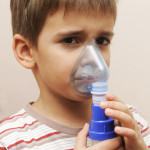As you prepare to open your campuses to students and staff, here are a couple of items to help you prepare.
1. The National Pesticide Information Center (NPIC) will hosting a webinar on

Remember to read the label, washing hands after use should be exercised by anyone using these products without gloves.
Disinfectant safety during the COVID-19 pandemic
Wednesday, June 24 at 1:00 pm Central
In this webinar NPIC will address common misconceptions and questions about disinfectant safety. They will also tour EPA’s online tool for products effective against COVID-19.
Topics include:
- Differences between cleaners, sanitizers, and disinfectants
- Why “contact time” is important for a disinfectant to work
- Understanding EPA’s List N for disinfectants against the COVID-19 virus
- Precautions for disinfectants and wipes
There will be time for questions after the presentation and we will post the webinar recording to the NPIC website soon after. Webinar attendance is limited.
Registration is required, click here to register: https://oregonstate.zoom.us/webinar/register/WN_xDLVDXf2RdWftX-nmXdVAw
This presentation is for the public; disinfectant users in education, health care, and other professional settings; and tribal, state, and federal agencies.
2. The Longer-Term Effectiveness of Home Asthma Interventions
Tuesday, June 23, 2020 at 2:00 pm EDT

Since 1980, the biggest growth in asthma cases has been in children under 5.
Research supports that community health worker led healthy homes interventions improve asthma outcomes among children. But how effective are these programs with adults, and what is the longer-term effectiveness of these asthma interventions? This is a key consideration when measuring the economic impact of asthma intervention programs. Two researchers will present their findings from long-term multifaceted home environmental asthma intervention projects with older adults and children in diverse low-income households.
Presenters
David A. Turcotte, ScD, Research Professor, University of Massachusetts Lowell
Helen Margellos-Anast, MPH, President, Sinai Urban Health Institute, Sinai Health System, Chicago, Illinois.
Target Audiences
OLHCHH grantees; Federal agencies with related programs; HUD/OLHCHH field staff; University-based Healthy Homes educators; Health Care Providers; and many other stakeholders.
Registration Link https://attendee.gotowebinar.com/register/266550612932733966
3. EPA Advises Facility Operators to Prepare for Hazardous Weather Events

With June marking the start of hurricane season in the Atlantic Ocean and Gulf of Mexico, the U.S. Environmental Protection Agency (EPA) reminds facility operators of requirements for preventing, minimizing and reporting chemical releases. Facility operators are obligated to maintain safety, minimize releases that do occur, and report chemical or oil releases and discharges in a timely manner, as required under the Comprehensive Environmental Response, Compensation and Liability Act and/or the emergency planning provisions of the Emergency Planning and Community Right-to-Know Act and/or the National Oil and Hazardous Substances Pollution Contingency Plan.
“The people of Texas and Louisiana know that with the environmental, economic, and recreational benefits of the Gulf Coast also comes the responsibility of preparing for hurricanes and other hazardous weather,” said Regional Administrator Ken McQueen. “As with every hurricane season, EPA encourages coastal businesses to prepare their facilities and employees for whatever the weather might bring.”
Unlike some natural disasters, hurricanes and tropical storms are predictable and usually allow facilities to prepare for potential impacts. EPA reminds operators of some basic steps to prepare for hazardous weather:
- Review procedures for shutting down processes and securing facilities appropriately—especially hazardous chemical storage—or otherwise implement appropriate safe operating procedures.
- Review updated state-federal guidelines for flooding preparedness, available here.
- Assure all employees are familiar with requirements and procedures to contact the National Response Center in case a spill or release occurs.
- Review local response contacts, including Local Emergency Planning Committees (LEPCs) and State Emergency Response Centers (SERCs). A list of these contacts by state is available here.
Prevention and reporting requirements for facilities are available at https://www.epa.gov/natural-disasters/hazardous-weather-release-prevention-and-reporting.
In the event of a hazardous weather incident, please visit https://www.epa.gov/natural-disasters for updated emergency information.
You can also visit the Texas Extension Disaster Education Network which covers more than one disaster.

 .
.